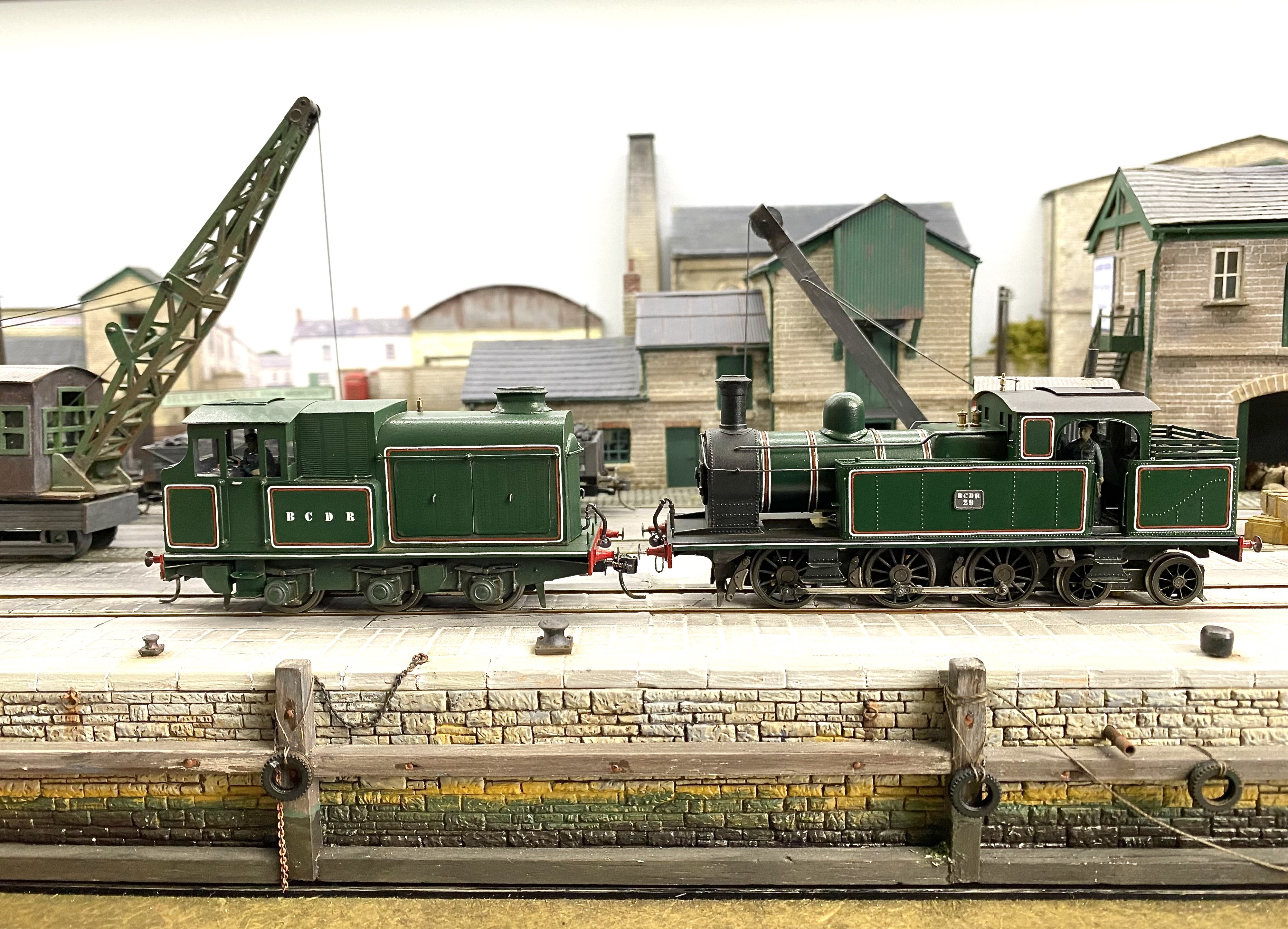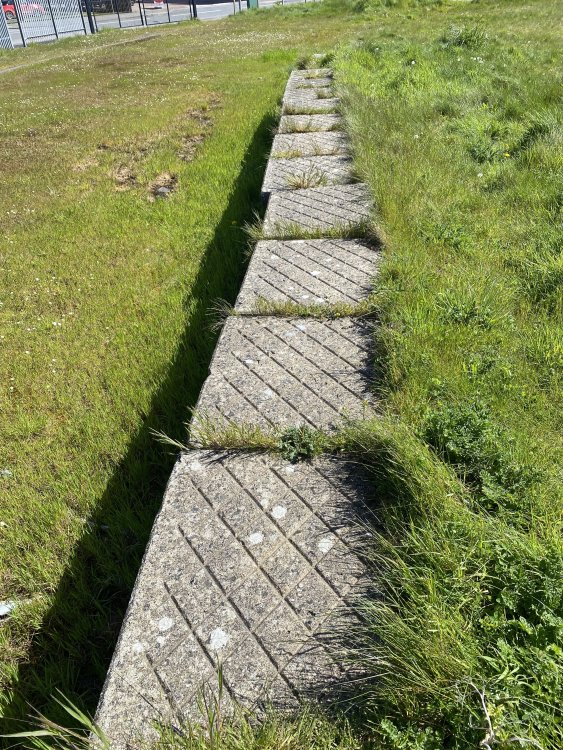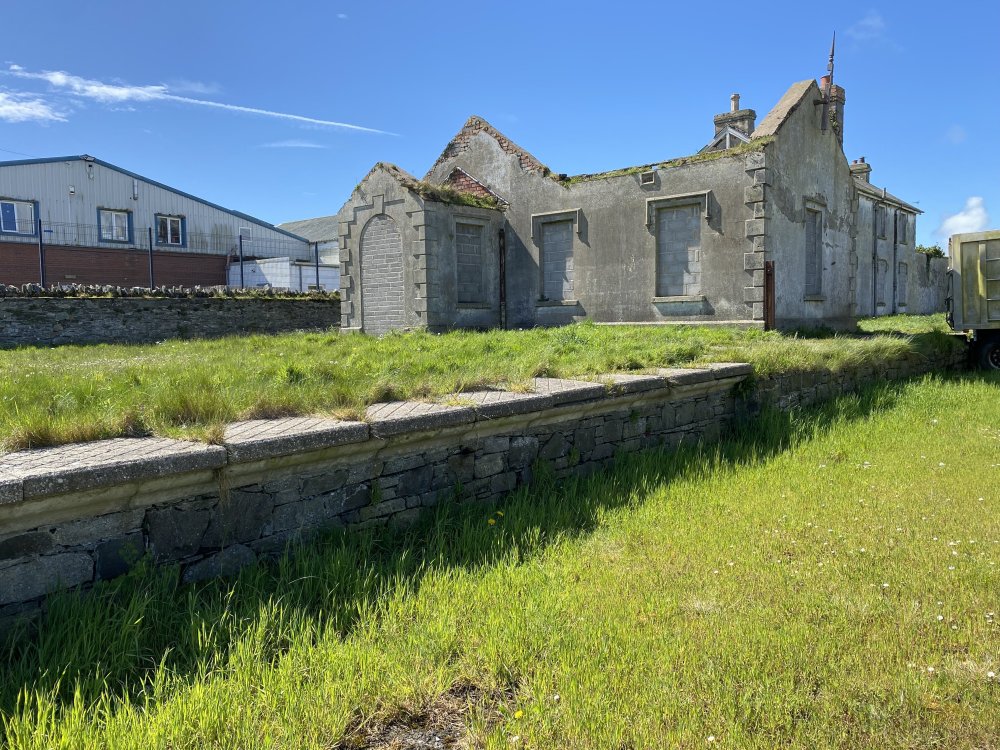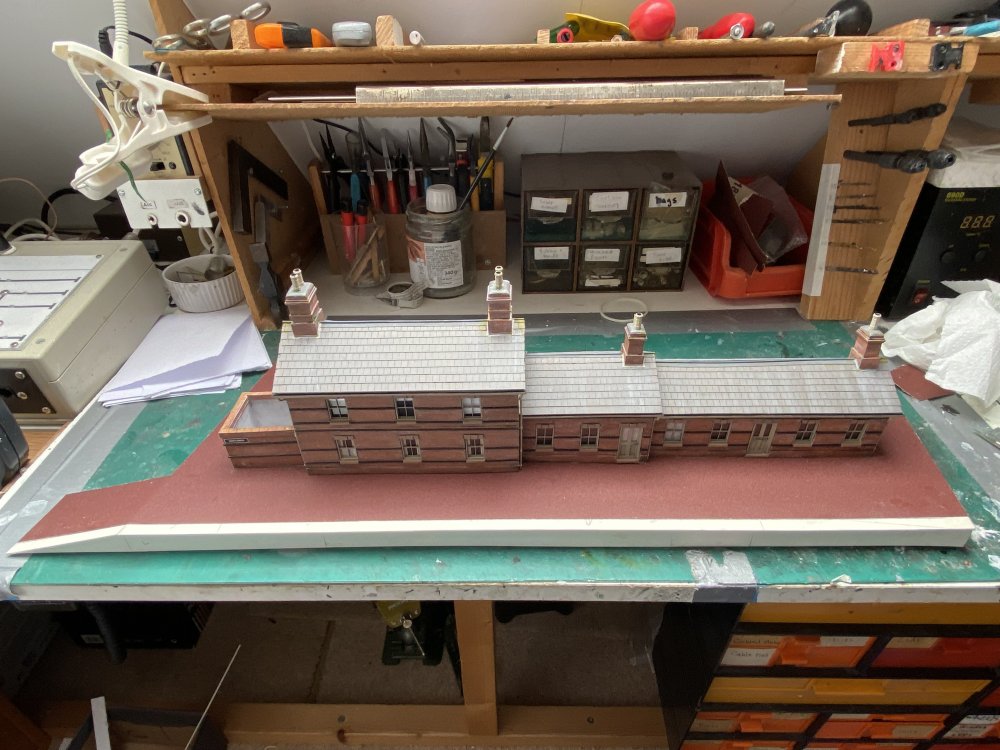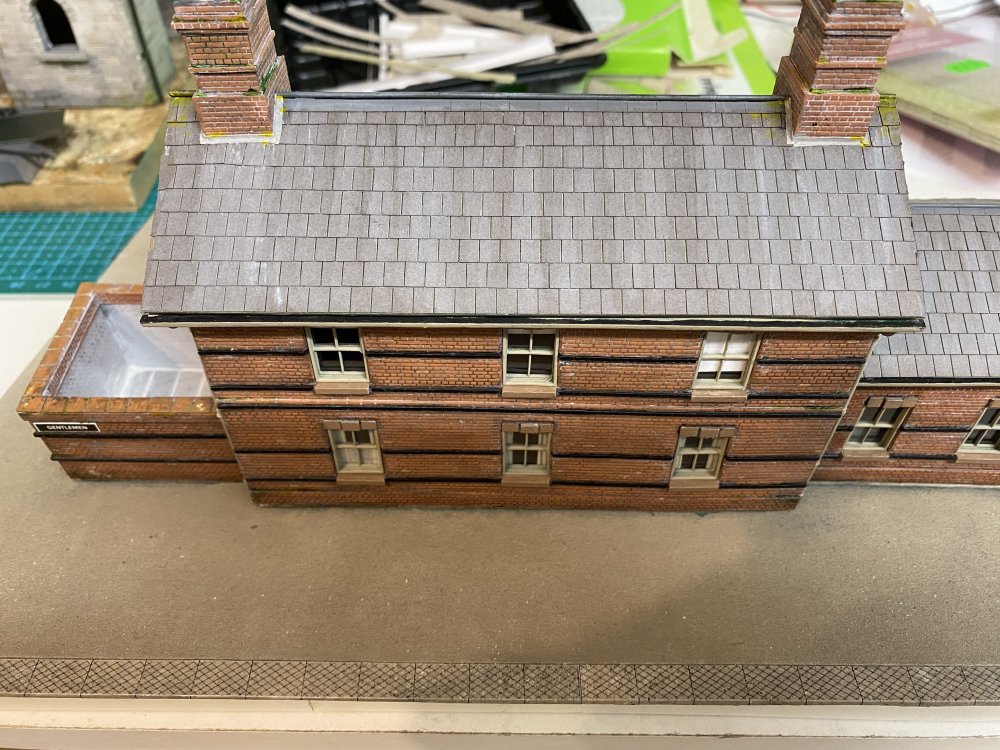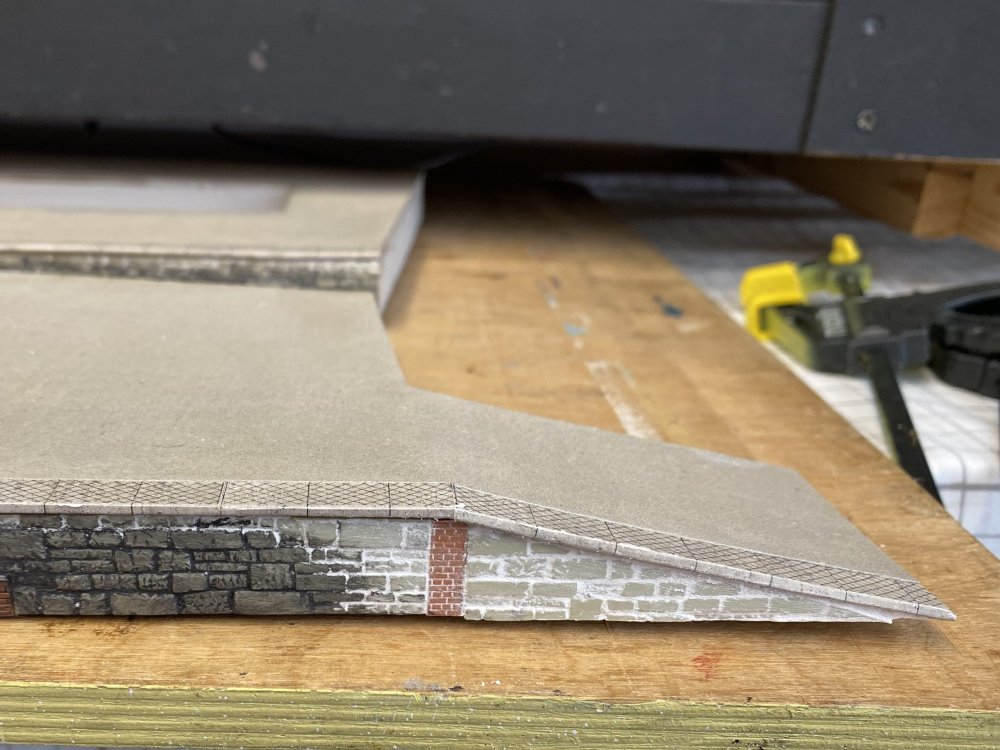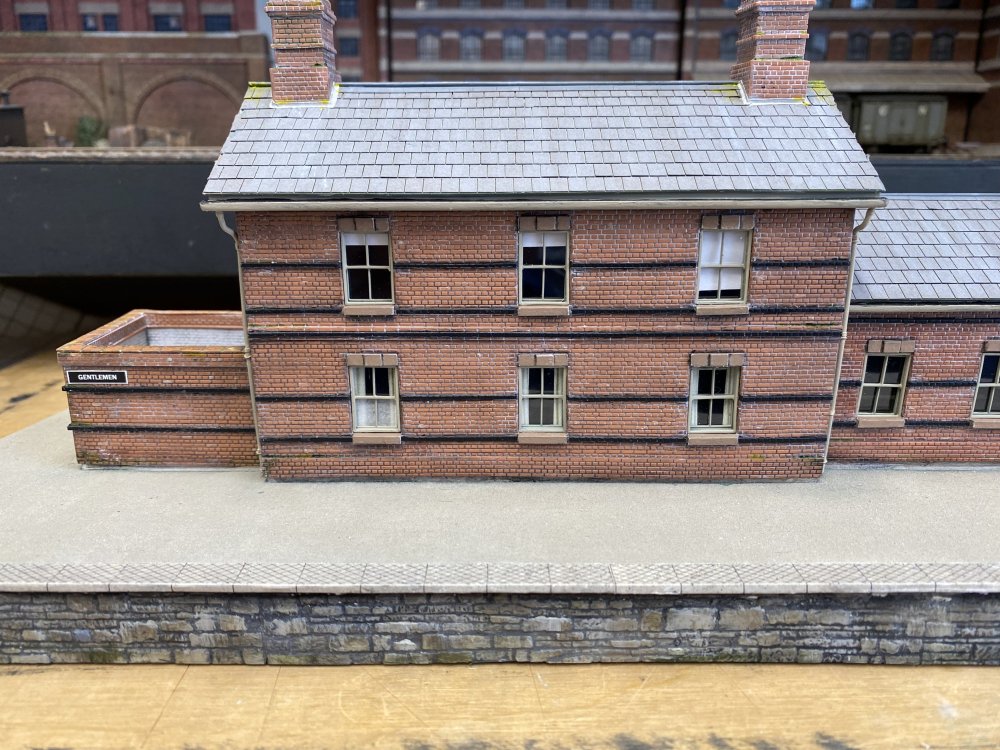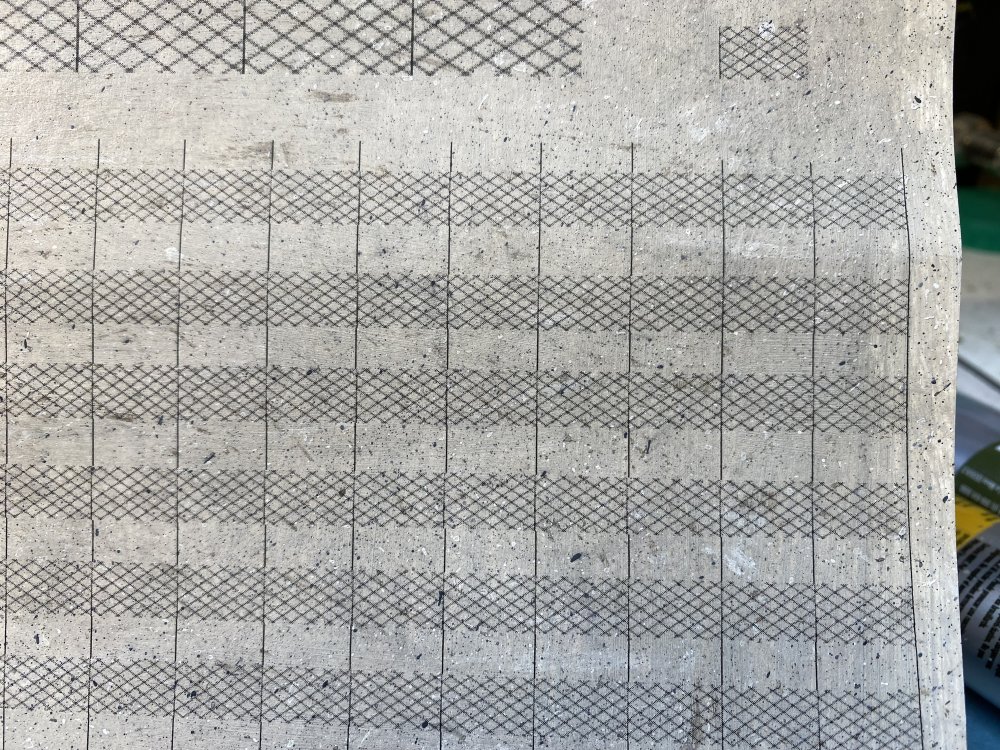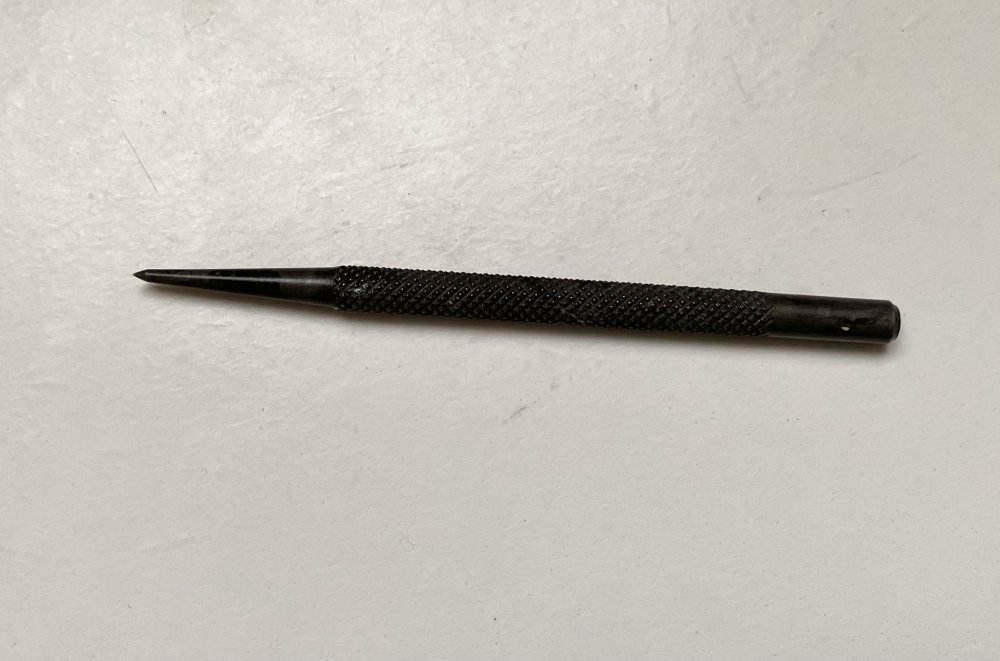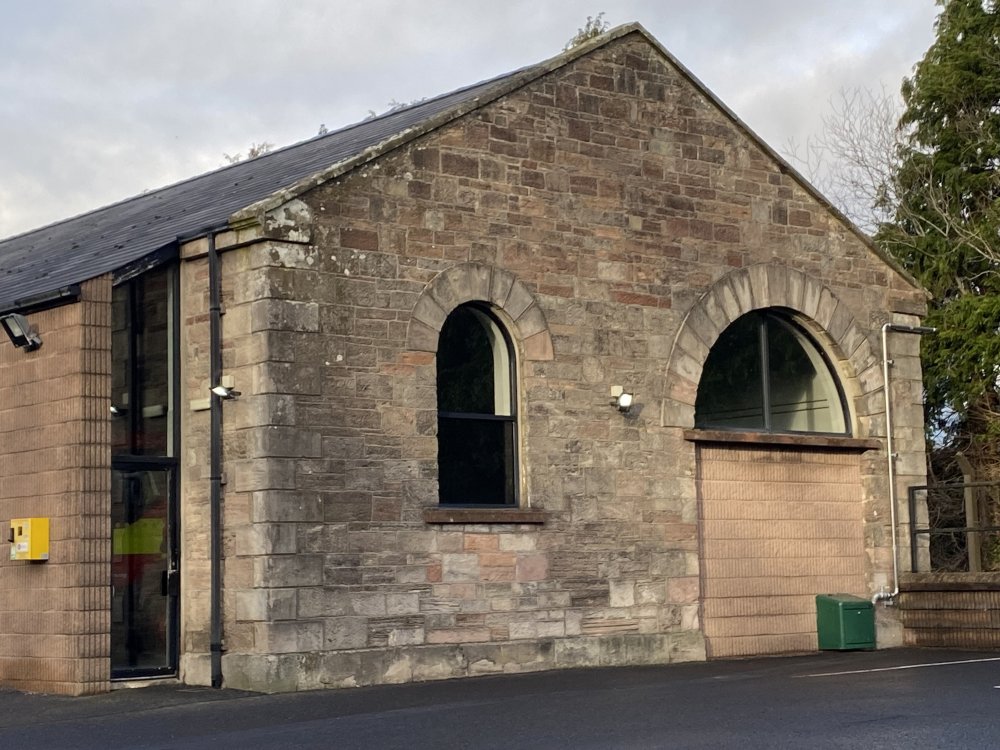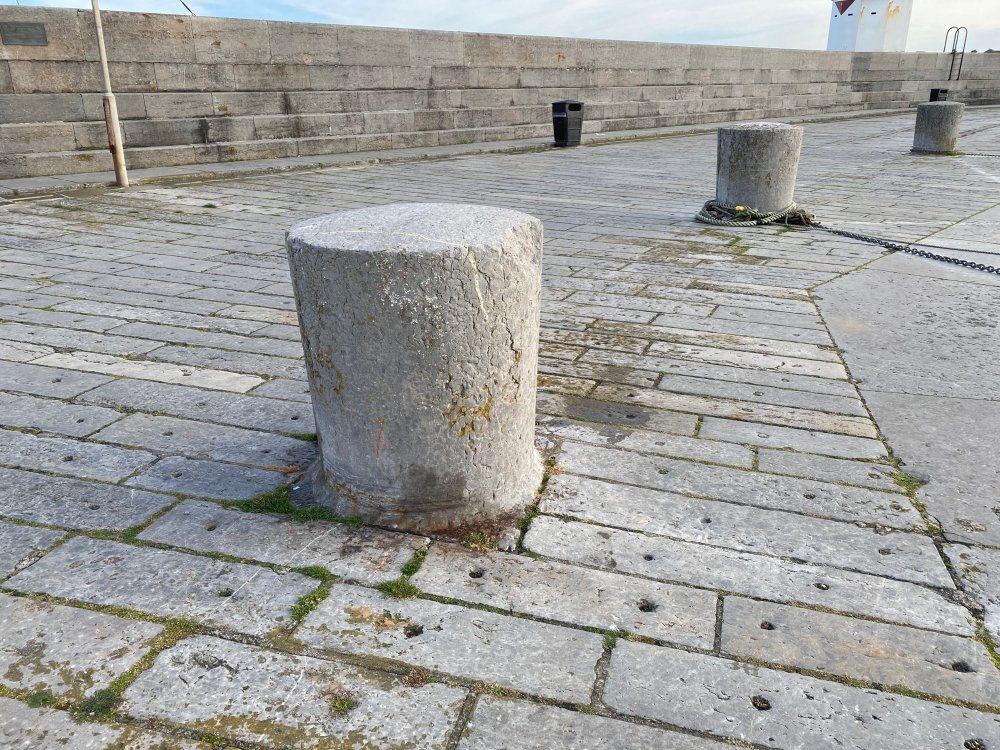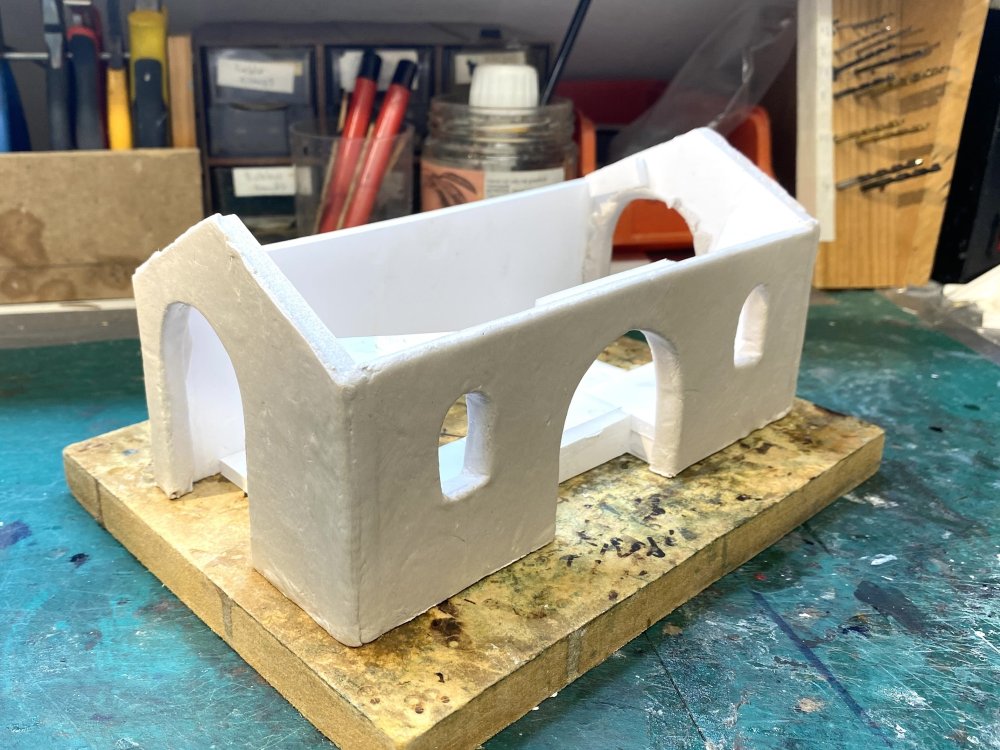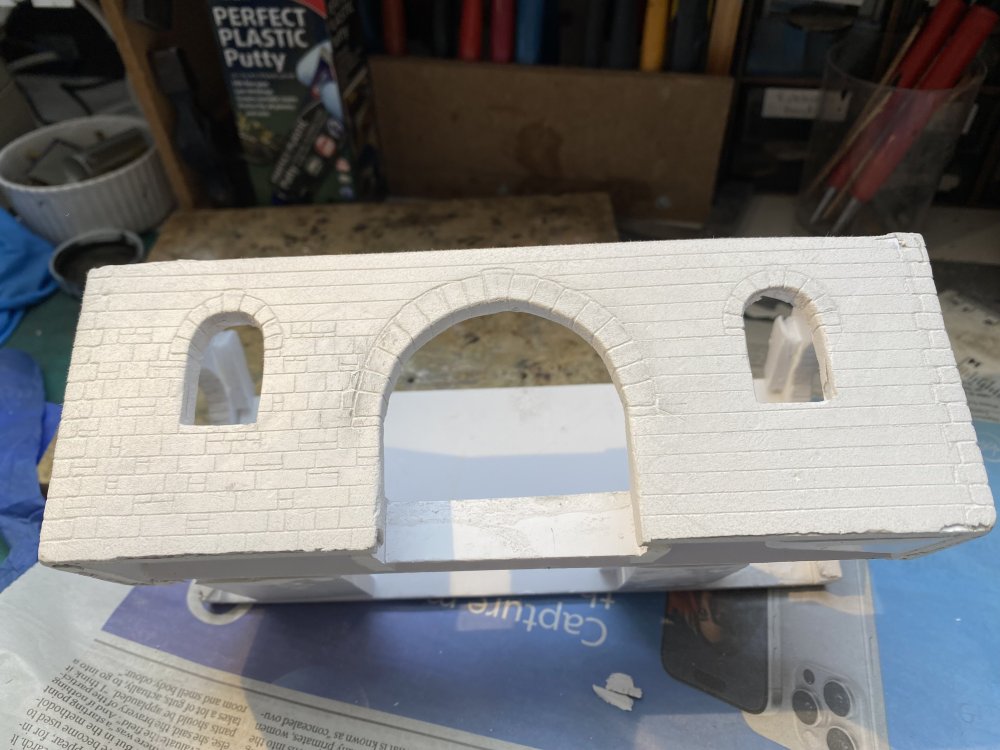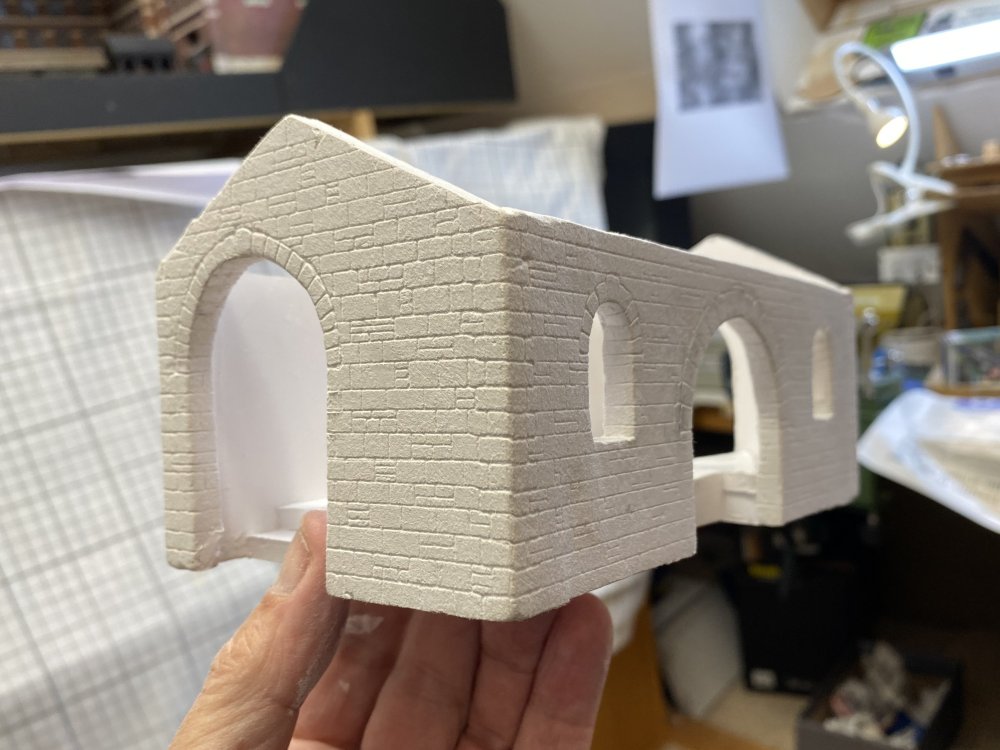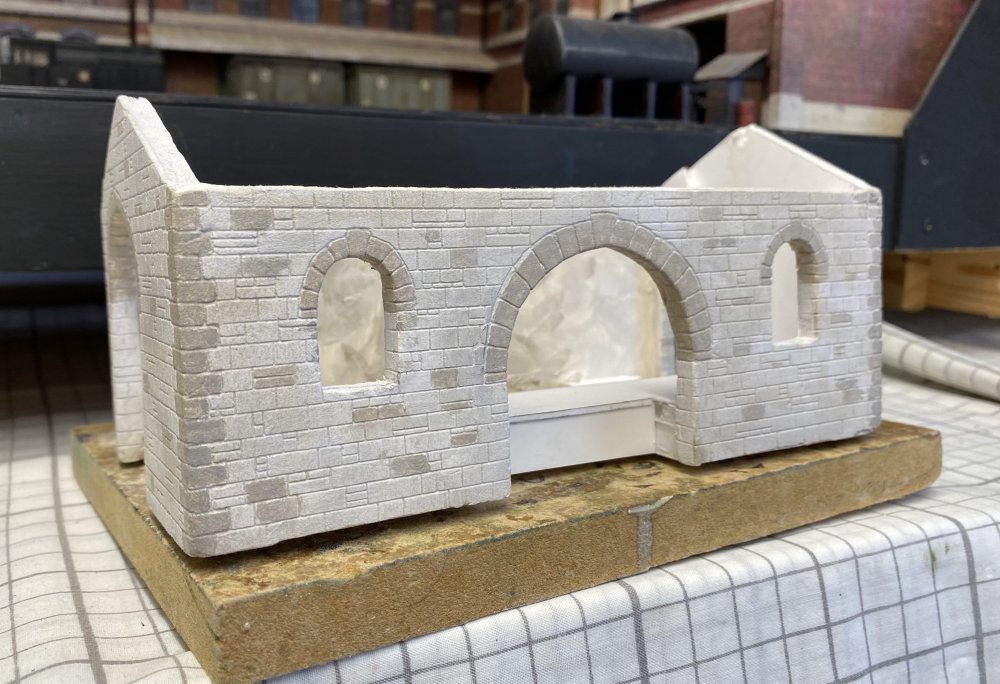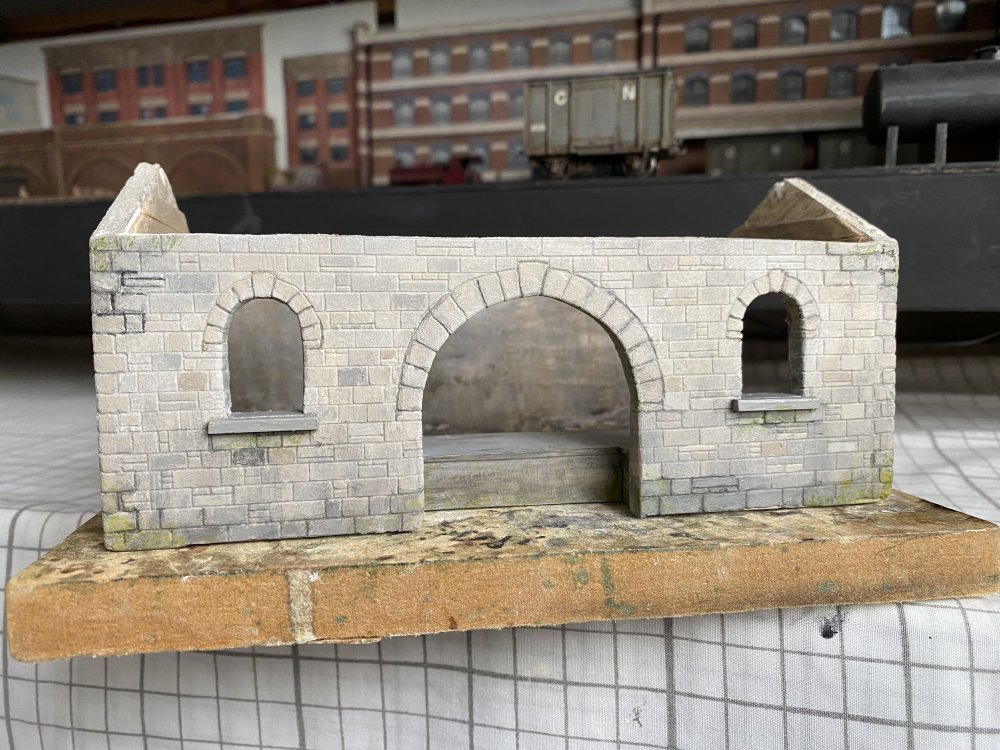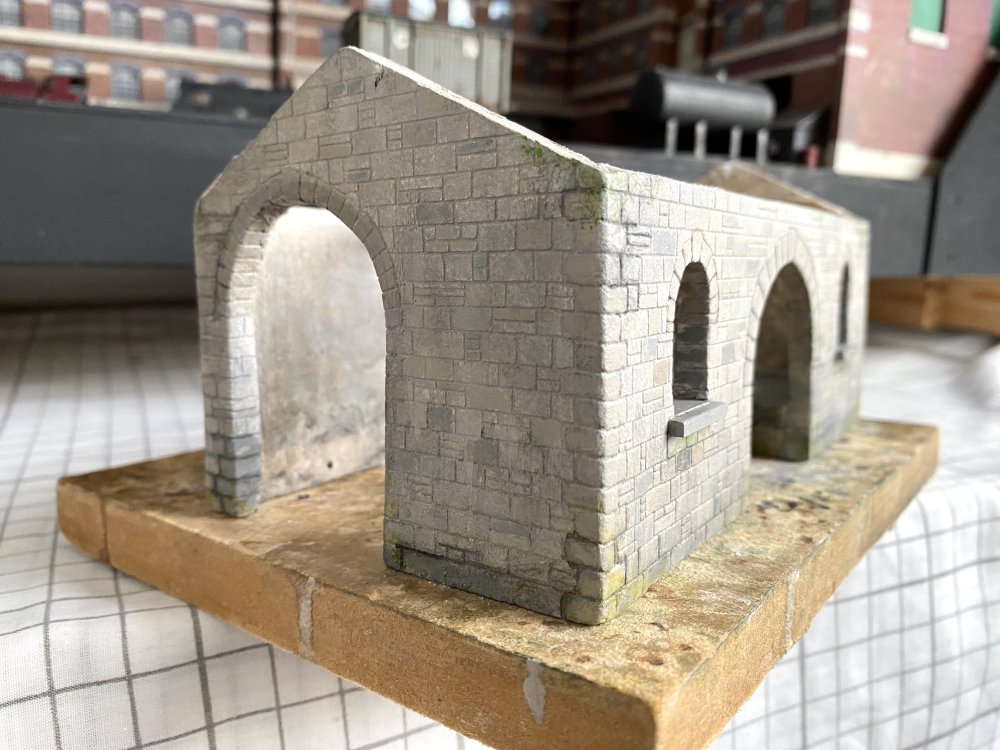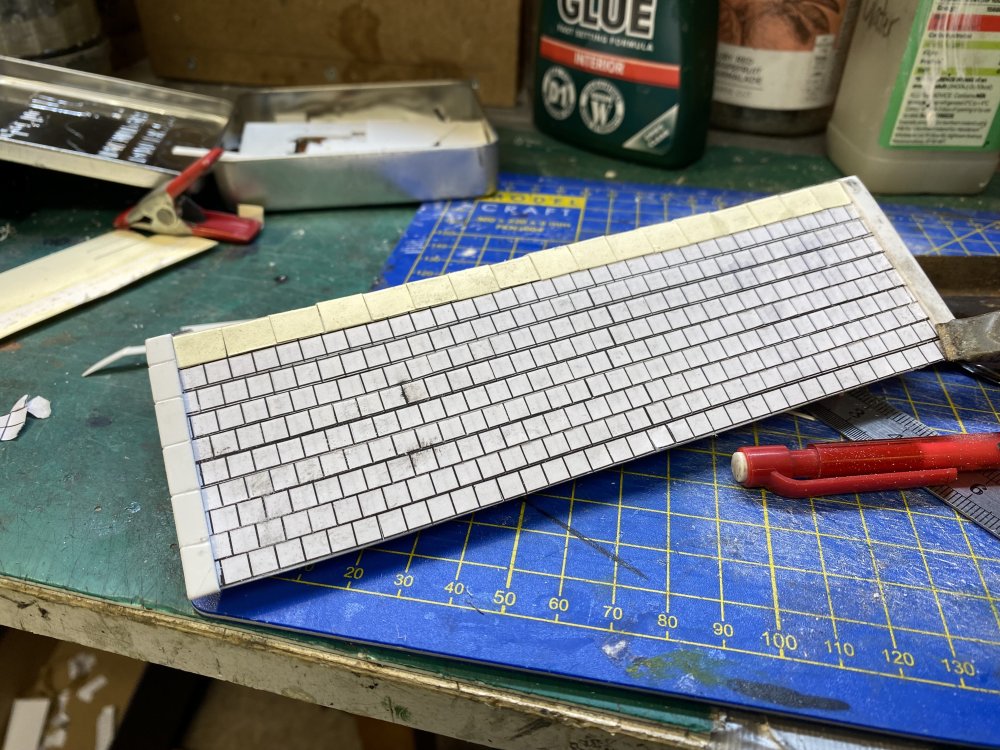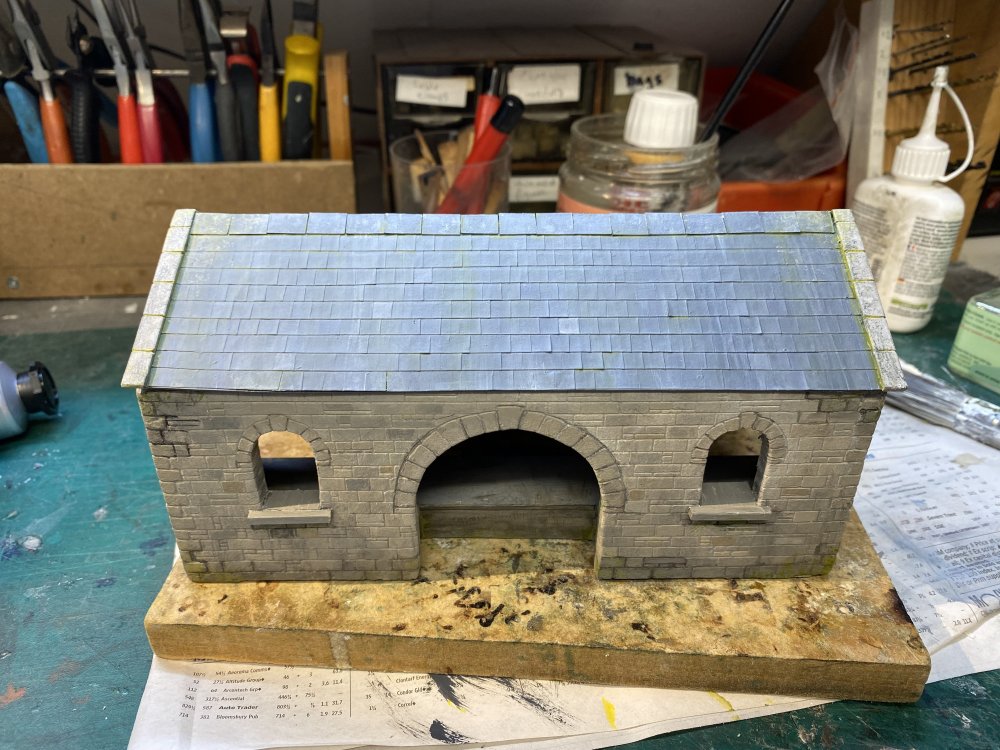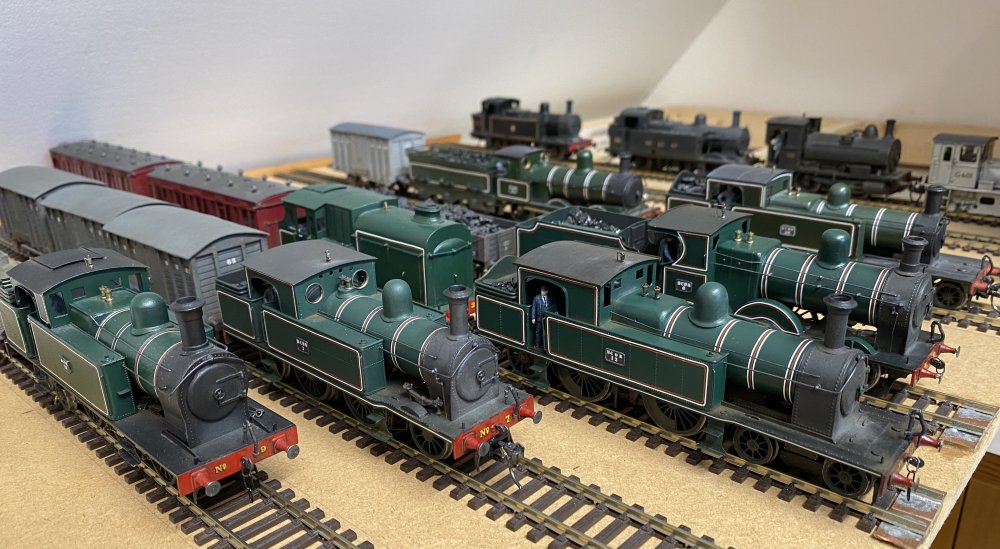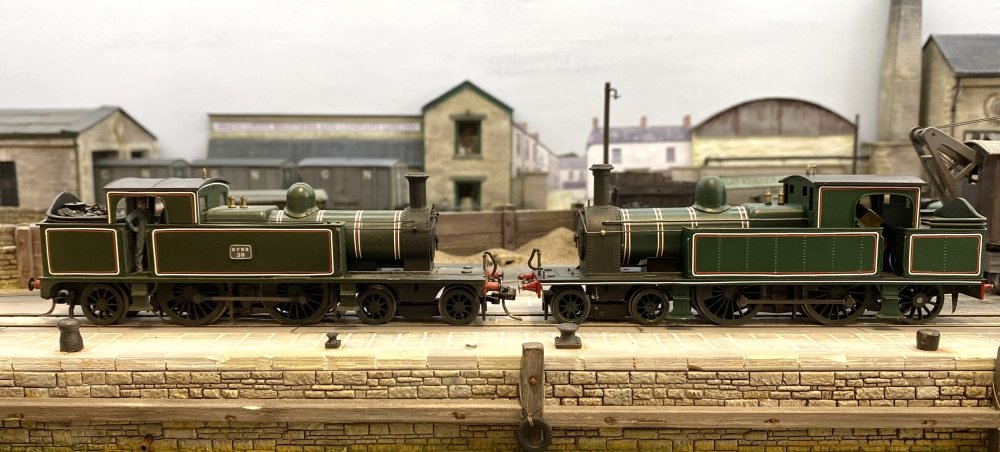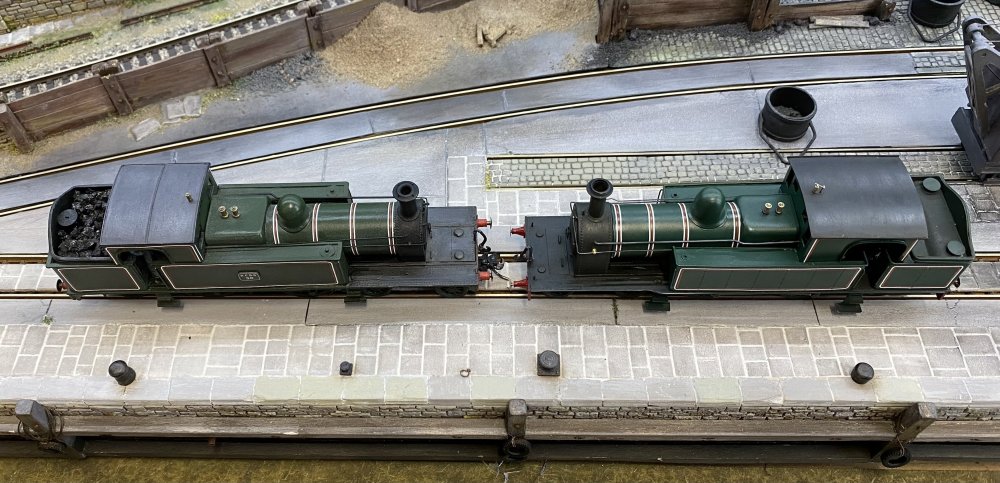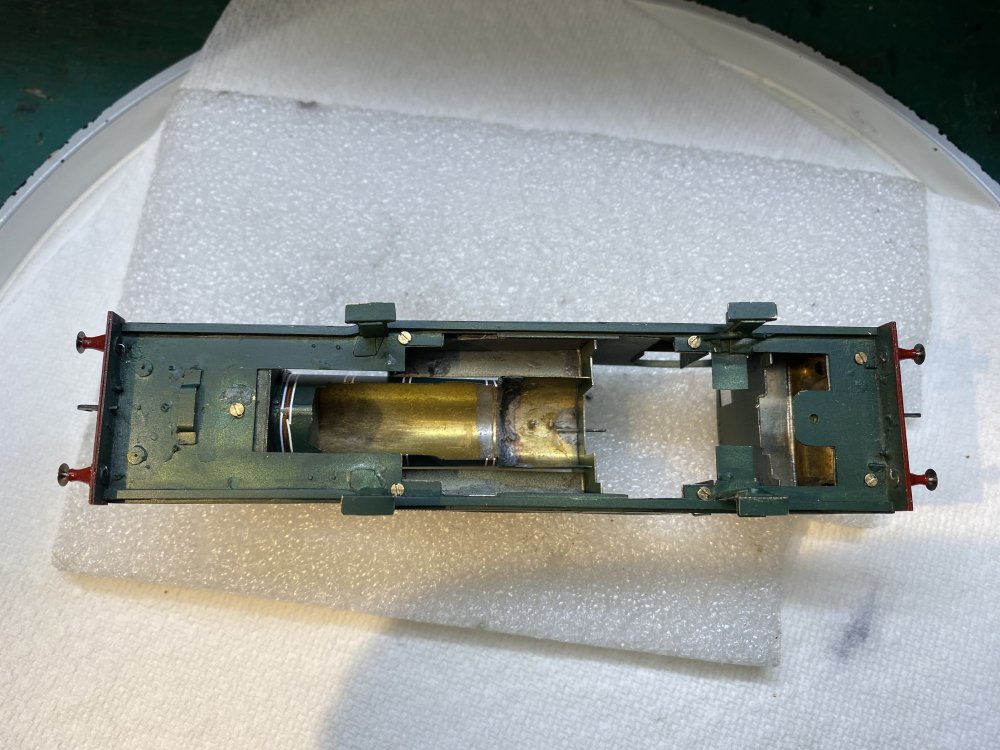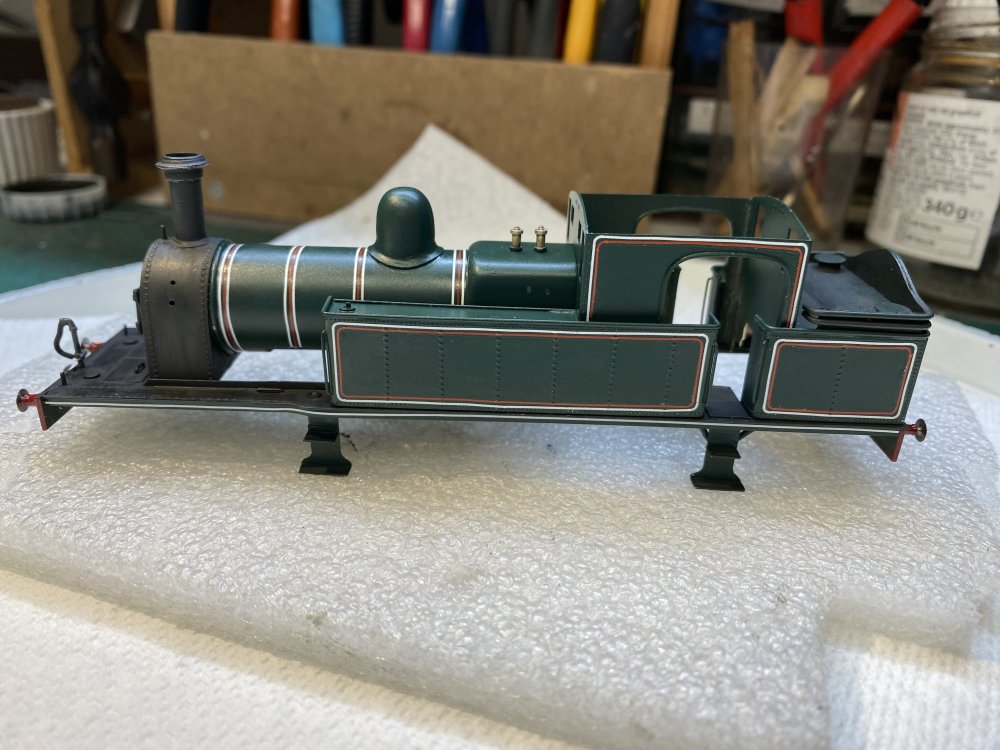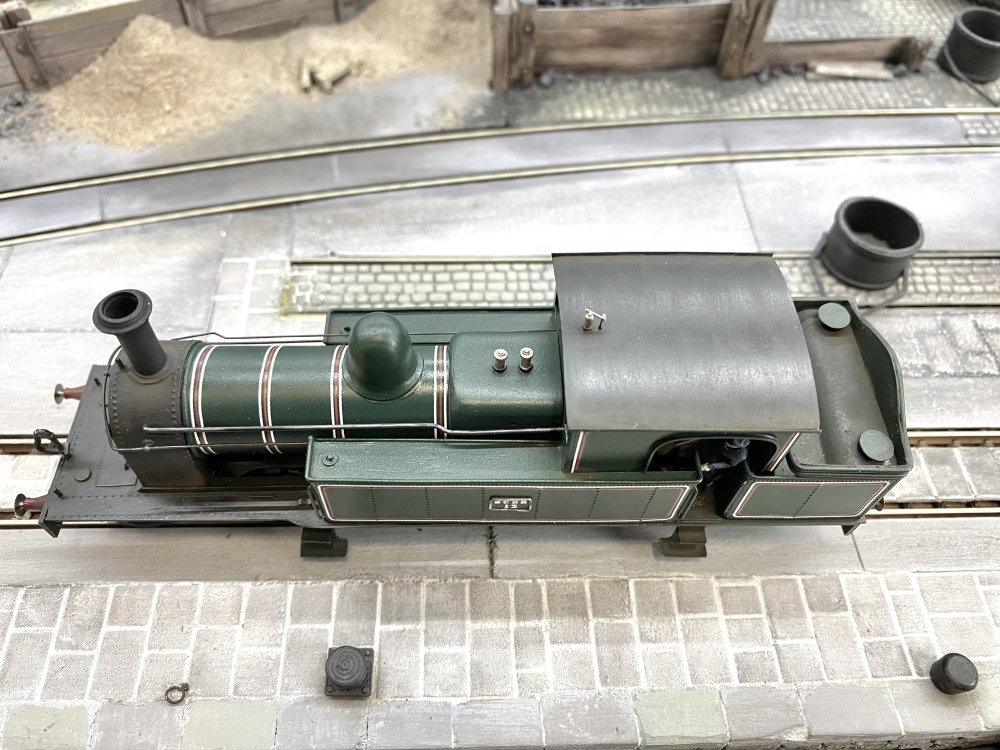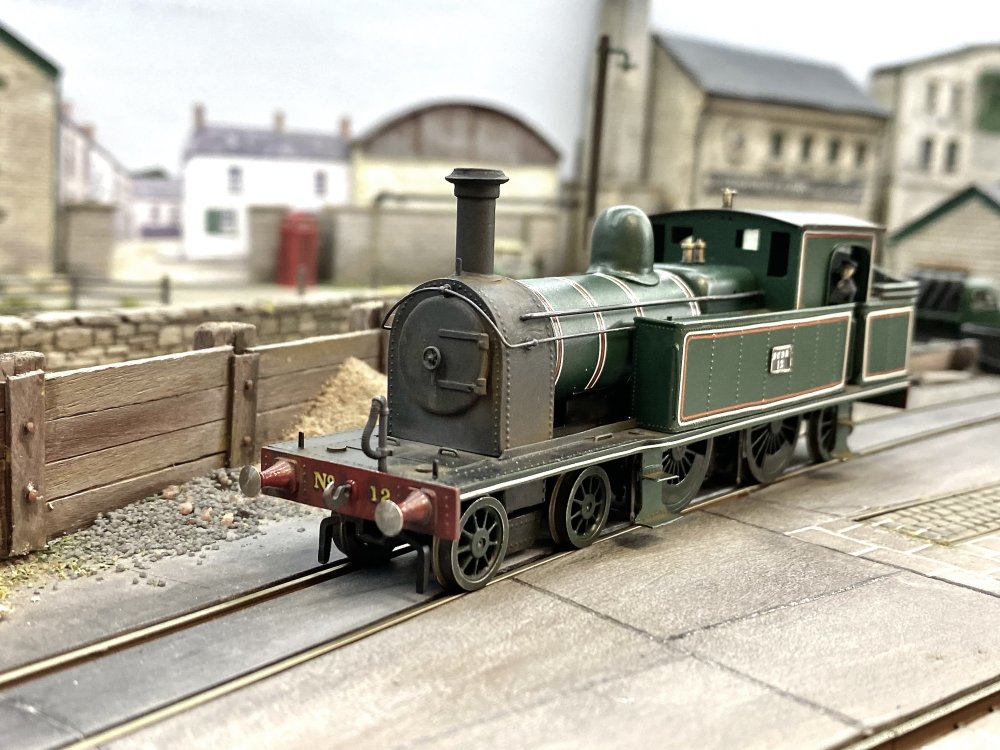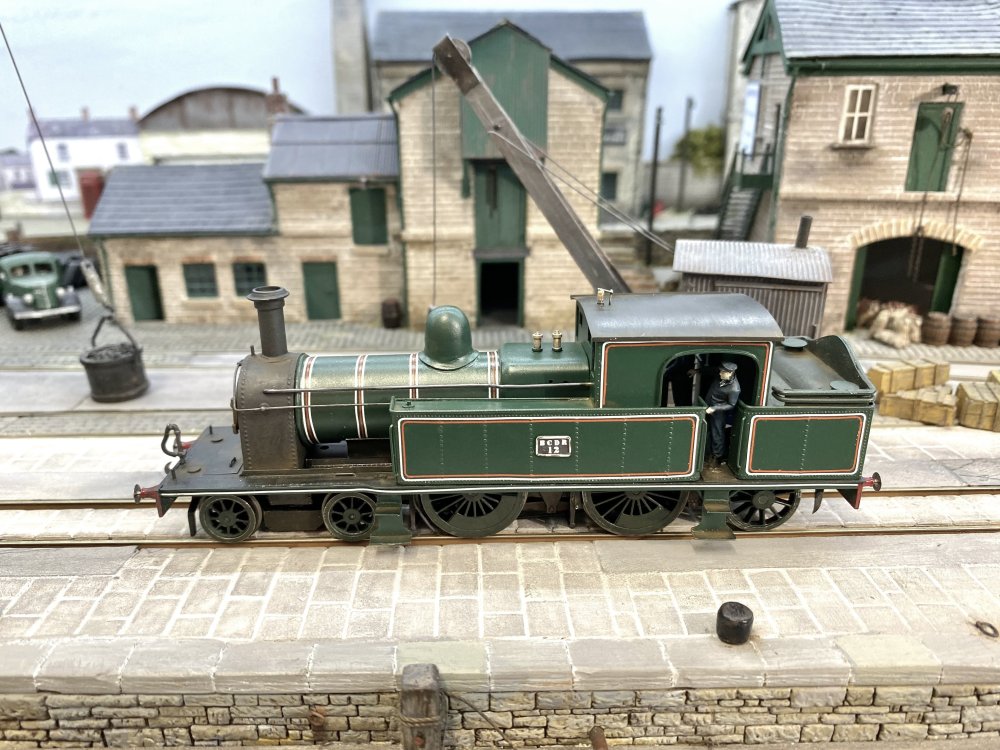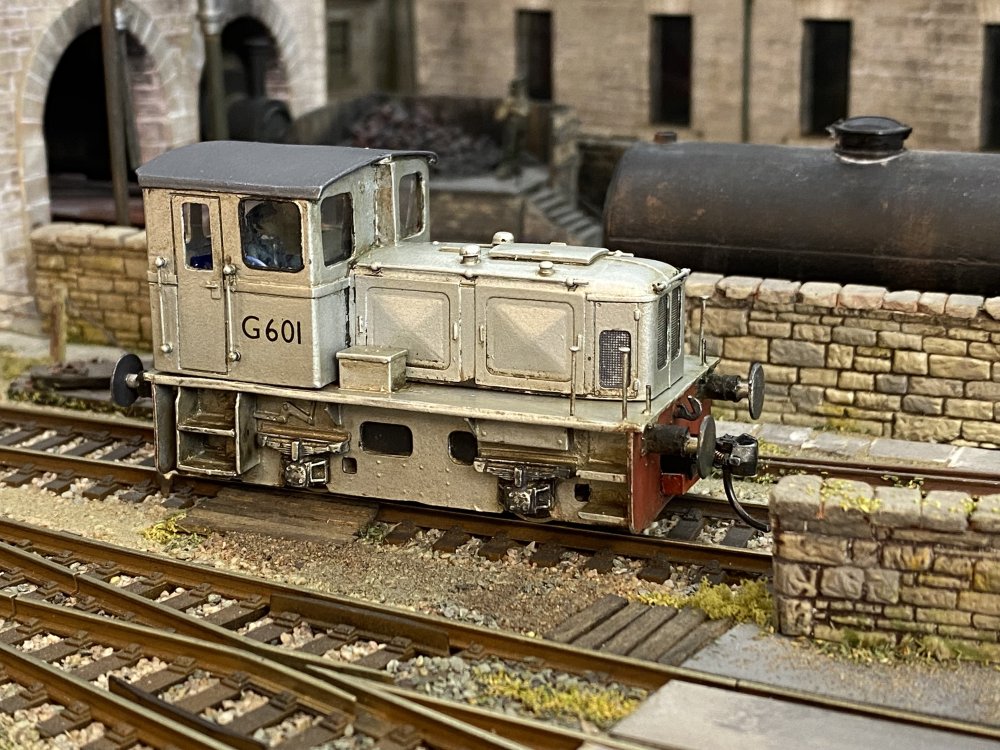-
Posts
956 -
Joined
-
Last visited
-
Days Won
56
Content Type
Profiles
Forums
Events
Gallery
Everything posted by Tullygrainey
-
Many thanks. I hadn't thought of laser-cutting. Another technique not yet in my skill set
-
You're right about the level of detail resin can produce David. It amazed me the first time I tried it. I did consider resin casting for these at one stage but in 4mm scale each one is 12mm by 8mm and I wasn't convinced I could even make a reasonable master either in plastic or clay. Also, if I made only one stone, the business of casting copies would be beyond tedious but if I tried to make a master row of them, consistency would be the challenge. The originals, being concrete casts, are all exactly the same. The paper versions have worked better than I expected but they're not as robust as plastic or resin would have been. I've sprayed them with artist's fixative but a coat of matt varnish might also be a good idea. Some survivors on the remains of the platform at Ardglass station. Photos I took last year.
-
A bit more progress with the layout. A station platform made in two bits because it will cross the join between the two baseboards. I used mounting card for the structure and after a failed attempt to use chinchilla dust for the platform surface - it ended up looking like congealed porridge after the glue went on - I settled for 180 grit sandpaper glued to the top surface with wood glue. Many of the stations on the County Down had cast concrete coping stones, 3ft x2 ft, along the platform edge. These had distinctive diagonal cross hatching, 8 lines in each direction. Deciding how to model these held me up for a while. 3D printing might well be the solution but that's a mountain I've yet to climb. Even base camp is still over the horizon. I managed to draw one coping stone to scale on the computer then copied and pasted to get what I wanted. The result was printed onto paper which I'd pre-painted with a suitable mix. (I'd already tried printing first then painting, only for the nice printed lines to disappear under the paint, despite using water colours). The printer survived being fed painted card. Phew! After painting the sandpaper with various shades of artist's acrylic, the coping stone prints were cut into strips, scored and folded then glued down along the front of the platform and wrapped over the leading edge. Wills Coarse Stone (SSMP200) was used to cover the platform front, sanded back a bit and wiped over with filler. Paint did the rest. The station building will bed down into a shaped hole cut for it in the platform. It's still sitting a bit proud in this photo. A bit of weathering will also help to blend building and platform together.
- 115 replies
-
- 18
-

-

-
Just brilliant! The buses and the buildings are wonderful but so are the road surfaces. Perfectly observed and totally convincing. Lovely work.
-
Thanks Derek. Yes, I leave the clay to dry completely before scribing it. If the clay is soft, there's a tendency for it to move away from the scriber and create raised bits either side of the scribed line - more like ploughing than scribing. When the clay is dry, it's possible to get finer scribed lines and they stay where you put them. I use a hardened steel centre punch which has a fine point but anything sharp and pointy would do. As to yellow/green weathering, steal away. I'm fairly sure I nicked the idea in the first place after seeing it somewhere - possibly in a magazine article by Gordon Gravett. Alan
-
Not a kit build. A transformation. I had a car like that once - more filler than metal. Terrific work Darius
-
Thanks David. The Comber goods shed which I used as inspiration appears to have been built in sandstone, possibly from the nearby quarries at Scrabo - there was a rail link from the BCDR Donaghadee branch line in the 19th Century. However, what I've ended up with looks more akin to limestone, like the harbour at Donaghadee where I often walk and which coincidentally also had a BCDR rail link.
-
After a racing start, this layout ground to a halt whilst a spate of engine building claimed the bandwidth. Now that there are enough locos to keep the works fitters in full time employment for a while we can get going again here, this time with a goods shed. After faffing about with various kinds of embossed plastic sheet and getting nowhere, I settled on a foam board shell covered with DAS then sanded smooth and scribed. This is my second attempt. The first one was just wrong but it's been useful for experimenting with paint and colours. For this attempt, I used photos I took of the surviving BCDR goods shed at Comber as a guide to the shape and size of the building and the stonework though it's not a slavish copy of that building (now the town's fire station). Quoins and arches were scribed first then horizontal course lines were penciled in and scribed. These help guide the scribing of individual stones and keep things under control. I have scribed stones in the shape of pillows in the past. Next, a thin wash of a pale colour and some individual stones picked out in stronger colour got things started. Painting was all done with artist's acrylics, mostly raw umber, titanium white and mars black. From there, more thin washes and retouching of the feature stones gradually built up the colour. A bit of black into some mortar lines and some dry-brushed yellow/green added a bit of weathering. I started out using the same ready-made roofing slate sheets that I used on the station (see above) and though they worked perfectly for that building they just didn't look right here- too small and too neat for a slightly decrepit goods shed. So it was back to the paper strip method using strips cut from grids drawn up on the computer. They're glued onto a plasticard base here. The method produces a slightly irregular effect - well it does if you're not too fussy about it - which I think suits this building. The danger here is that individual slates can curl up in a most un-slate-like manner as the paint dries. They can usually be glued down again. The roof isn't attached yet. I have some window frame etches on order and need to fit those before gluing it down. Gutters and downpipes are next. Back in harness, somewhere on the County Down. Alan
- 115 replies
-
- 22
-

-

-
All your effort has produced a fine bridge Patrick but did it take a toll on you?
-
Glad to see you're coping Patrick
-
That's an impressive to-do list James. Take your time over it and enjoy the process. Be prepared for it to be challenging and likely to go wrong occasionally but keep at it. Most things are remediable, especially brass kits and the more we do, the better we get at it. Your weathering looks good. I especially like the wagons - subtle but suitably decrepit! Alan
- 58 replies
-
- 1
-

-
- 1950s to 1990s irish railways
- harcourt street line
- (and 3 more)
-
Moist eyes here too Patrick. Lovely video.
-
Thanks everyone. Number 12 brings the County Down roster to 7 locomotives. The fitters are saying they've lined out enough locos to do them for a while. Me too. Back in September 2024 I started out to build a small exhibition layout for this lot to run on but got distracted. I probably should get back to that. In the meantime, new arrival No.12 is stretching its legs. Alan BCDR No12.mov
- 645 replies
-
- 11
-

-

-
The differences are fairly subtle but I think scratch building the body on version 2 got it a bit closer to the look of the prototype. I wish now I'd just scratch built a chassis while I was at it. Wouldn't have been that much more work in the end!
-
Thanks David. Yes, I took these pics a couple days ago. Version 1 with adapted Adams Radial bodywork and unmodified chassis on the left
-
The BCDR bogie tank is almost done. At last. The bit that should’ve been no trouble, the ready-to-run chassis , fought me every inch (25.4mm) of the way. Part of that was my own fault for hacking and filing bits off without protecting the motor and gears from metal filings. It still makes odd noises going backwards. However there was also an intermittent short circuit which took days to track down and fix. The big hammer was close to deployment more than once. Seems ok now. I settled in the end for Number 12. One of the of the first batch of 5 bogies tanks (“Series A”), it was built by Beyer Peacock in 1904. Still needs a coal load and maybe some more weathering. After taking the pics I managed to destroy one of the tank side number plates so a new one is getting made. Body bits bolted together after painting and lining ... ... and chassis fitted. Crew hide the lack of inside cab detail, as usual. Alan
- 645 replies
-
- 15
-

-

-
Lovely job Derek. The colouring is just right. That back scene works well too!
-
-
Is there a 'scale' element to colour as well as everything else? Colours that are accurate to the prototype but look wrong when applied onto a model. It's often the case that pure white looks wrong on a model and needs to be toned down with a bit of grey to look 'correct'. Those Rathbone paint jobs are exquisite. I picked up a second-hand copy of his book recently. It's really informative and totally demoralising in equal measure!
-
Many thanks for this. It's very sound evidence for what many of us probably suspected but couldn't have articulated so thoroughly. You've certainly helped me stop worrying whether my County Down locos are the right shade of green Alan
-
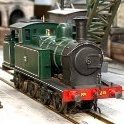
N Scale Ballywillan, Co Longford.
Tullygrainey replied to Kevin Sweeney's topic in Irish Model Layouts
Just fabulous! -
Nice slow running and impressive pulling power! Now there's a thought. Stay-alive was conceived to help DCC driven locos overcome momentary breaks in the signal which often tended to stop them dead. In my experience, DC driven locos are much less temperamental and don't usually need these sorts of aids but it ought to be possible. Stay-alives are just capacitors. Would you need some way of regulating the charge to and from the capacitor?
-
Very sorry to hear about your illness Derek but glad to know things are looking a bit better presently. Chemo can be pretty brutal and I'm sure it's been a long haul since December. Hoping you're beginning to feel a bit better now. Very best wishes for the coming months. Cheering for you here. Railway modelling is great therapy. Don't forget to post the pics. Alan
-
Terrific work David. Love the footplate detail and that three quarter view in the second photo is a gem. Very convincing.
.png.c363cdf5c3fb7955cd92a55eb6dbbae0.png)
